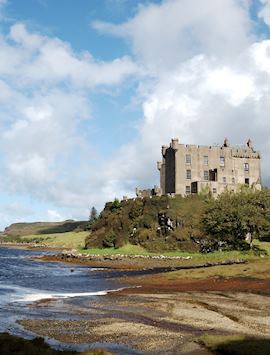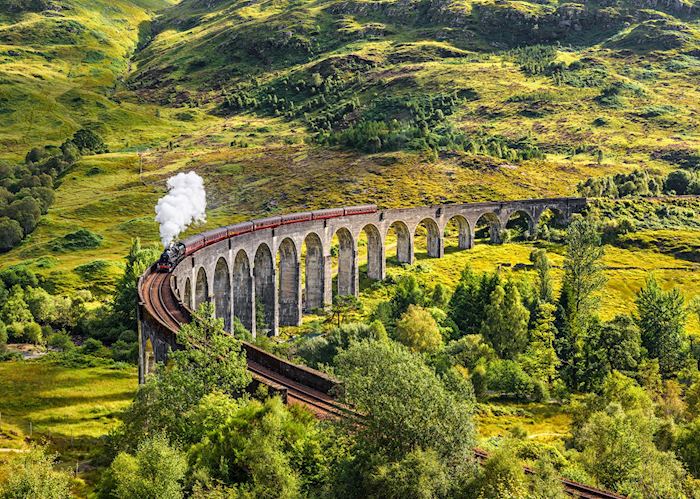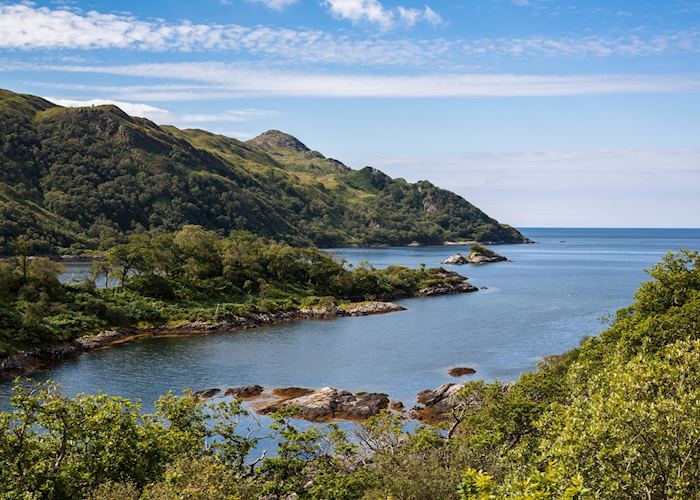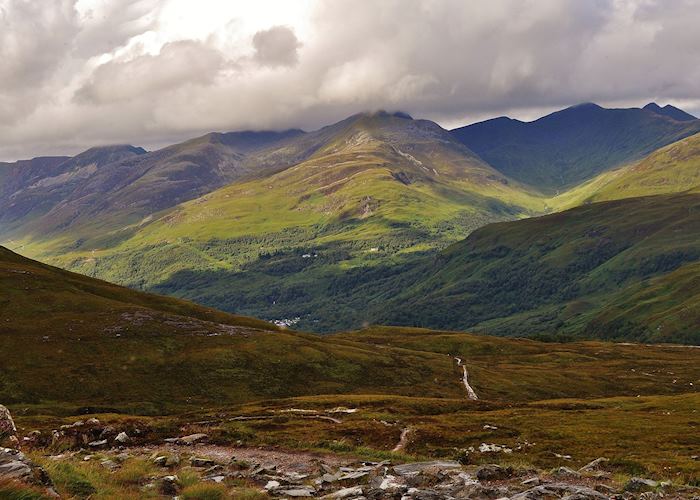Jump to:
Set at the foot of Ben Nevis on the shores of Loch Linnhe, Fort William is a convenient base in a spectacular area. It’s well positioned to explore Glen Coe, the Road to the Isles, and the ancient fault line known as the Great Glen, which connects Fort William with Inverness.
Access to the Nevis range from Fort William is easy and the long-distance walking trail, the West Highland Way, ends here. Despite its glorious surroundings, Fort William itself is a rather workaday place, its waterfront marred by modern infrastructure. That aside, it has plenty of outdoor clothing and equipment shops, cafés, pubs and supermarkets, making it a good place to stock up on supplies.
 For sweeping views of the surrounding glens and mountains, the Nevis Range Mountain Gondola takes you up the north face of Aonach Mòr, one of Britain's highest peaks, to a height of 650 m (2,150 ft). From the top station, you have views of the Great Glen and Ben Nevis and, on a clear day, the distant Inner Hebrides archipelago.
For sweeping views of the surrounding glens and mountains, the Nevis Range Mountain Gondola takes you up the north face of Aonach Mòr, one of Britain's highest peaks, to a height of 650 m (2,150 ft). From the top station, you have views of the Great Glen and Ben Nevis and, on a clear day, the distant Inner Hebrides archipelago.
The Snowgoose restaurant at the top station is a great place for lunch with a view. If you're here in late July or August, you can continue a little farther on the Great Glen Scenic Chair (akin to a ski lift). En route you'll get views of Fort William, Loch Eil, Loch Linnhe and the Great Glen. The upland meadow and heath of this area is home to red deer, ptarmigans and golden eagles.
Along with the mountain scenery, the region has an interesting military history. Oliver Cromwell first built a wooden defensive stockade here in 1654, but it was King William III who created a more substantial fort in 1690. The Jacobite army besieged the fort in 1746 but it survived largely intact, and soldiers continued to be stationed here until 1854. The fort was later dismantled and used as a railway yard, but significant traces of it remain on the waterfront near the railway station.
North of Fort William, the private estate of Achnacarry, ancestral home of the Chiefs of Clan Cameron, is a significant location in modern military history. During World War II it became the Commando Training Depot for the Allied Forces, with an estimated 25,000 men trained here. The 19th-century baronial castle on the estate isn’t open to the public, but the Clan Cameron Museum, set in a cottage in the grounds, has displays on the history of the clan and the castle.
If the region's history and heritage interests you then it’s well worth visiting the eclectic West Highland Museum. It tells the history of the wider area, particularly about local hero and pretender to the British throne Bonnie Prince Charlie, who led the Jacobite rising of 1745. The exhibitions and displays cover everything from the region's archaeological finds to Highlands' military history and the everyday life of settlers and crofters, including their music, games and cottage distilleries.
who's been there
- 617-223-4752
- Make an inquiry
Suggested itinerary featuring Fort William
This sample itinerary will give you an idea of what is possible when you travel in Fort William, and showcases routes we know work particularly well. Treat this as inspiration, because your trip will be created uniquely by one of our specialists.
Places near Fort William
- Glencoe 16 kilometers away
- Oban 51 kilometers away
- Loch Awe 59 kilometers away
- The Highlands 67 kilometers away
- Loch Ness 69 kilometers away
- Isle of Jura 91 kilometers away
- Inverness 92 kilometers away
- Isle of Skye 93 kilometers away
- Loch Lomond 95 kilometers away
- The Cairngorms 98 kilometers away
- Glasgow 119 kilometers away
- Isle of Islay 135 kilometers away
- Speyside 136 kilometers away
- St Andrews 152 kilometers away
- Edinburgh 153 kilometers away
- The Outer Hebrides 158 kilometers away
- Orkney 275 kilometers away
- The Lake District 292 kilometers away
- Liverpool 403 kilometers away
- York 408 kilometers away
- Shetland 432 kilometers away
- Snowdonia National Park 443 kilometers away
Photos of Fort William
Accommodation choices for Fort William
We've selected a range of accommodation options for when you visit Fort William. Our choices usually come recommended for their character, facilities and service or location. Our specialists always aim to suggest properties that match your preferences.
-
![Inverlochy Castle, Fort William]()
Inverlochy Castle
Fort William












